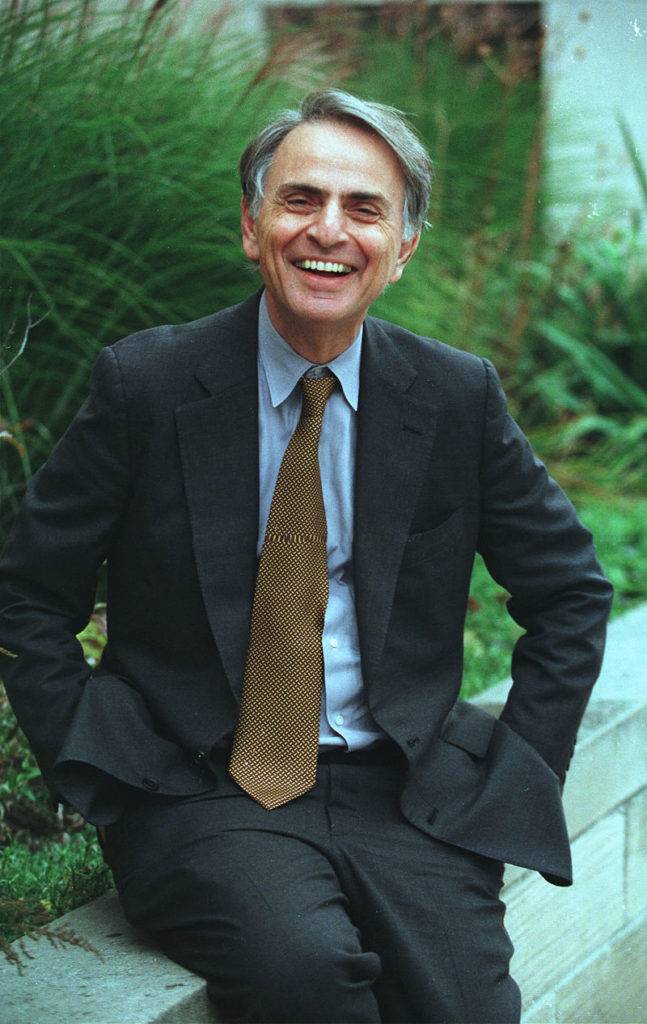In my series entitled “Making it Stick”, one of the posts discusses how to be credible as a speaker. One of the pieces of advice is to put things, especially statistics, into context for our audiences. Failing to do so can result in a presentation that is overwhelming or mind-numbing or both. As Chip and Dan Heath caution in their book Made to Stick:
Statistics are rarely meaningful in and of themselves. Statistics will, and should, almost always be used to illustrate a relationship. It’s more important for people to remember the relationship than the number.
I recently came across a great example of how to put statistics into context: The Cosmic Calendar by the great Carl Sagan. Sagan, who was passionate about the universe and its creation, wanted to convey the history of the cosmos in a way that could be grasped by the average person. No mean feat when you consider that we are talking about a mind-boggling 15 billion years. I have trouble keeping track of time in a single week.
To put things into context, Sagan developed the Cosmic Calendar, which compresses the entirety of eternity into a single calendar year on Earth. The result is fascinating and makes us realize just how late we are to the party, for according to the Cosmic Calendar:
- Things began with the Big Bang on the very first second of January 1st.
- Right now is the last second of the last minute of December 31st.
- Each month represents a little over 1.25 billion years.
- Each day represents 40 million years.
- Each second represents 500 years.
- The Milky Way was formed in May.
- The sun and the planets were formed in mid-September. Life arose soon after.
- The first multi-cellular organisms didn’t show up until in November.
- The first vertebrates appeared on December 17th.
- On Christmas Eve, the dinosaurs arrived. By December 29th, they were extinct.
- Our human ancestors made their appearance around 10:30 p.m. on December 31st.
- At 11:46 on December 31st, humans made fire.
- We only began to domesticate plants and animals at 11:59:20 on December 31st.
- All of recorded history happened in the last ten seconds of the last minute of December 31st.
- The pyramids were built nine seconds ago.
- The Roman Empire fell three seconds ago.
- Columbus discovered America one second ago.
- If the average human lifespan is condered to be 75 years, the average person will live 0.15 seconds.
I don’t know about you, but I find all of this incredibly humbling. I also find that it puts the history of the universe into a context that makes it more accessible.
As speakers, we might not have to explain the vastness of the universe; however, we often have to explain other complex matters. Be like Carl Sagan. Look for ways to put complex information into context so that your audience will understand and remember what you said.
For those of you interested in learning more about the Cosmic Calendar from Carl Sagan himself, you might enjoy the video below.

















9 Replies to “Be like Carl Sagan”
Great posting John- many thanks for drawing our attention to it. It certainly puts things into perspective doesn’t it? We have such an overblown sense of our own importance- this firmly puts us in our place.
Regards
Brian
Thanks John. Carl Sagan was a brilliant scientist, popularizer of science and public speaker. Much missed.
Here’s another of his presentations. Only 3.5 minutes but it never fails to send a shiver down my spine:
Pale Blue Dot
Alistair, thanks very much for sharing that video. It does indeed give goose bumps. It is a shame that Sagan had to leave us so soon. Let’s hope that we are smart enough to heed his wisdom. Cheers!
Great minds think alike?
http://weavehole.wordpress.com/2010/12/12/new-years-eve-countdown/
I found you through the ‘possibly related posts’ section, good to see a great thinker’s message being spread around.
Thanks very much. Carl Sagan was indeed a great mind.
🙂